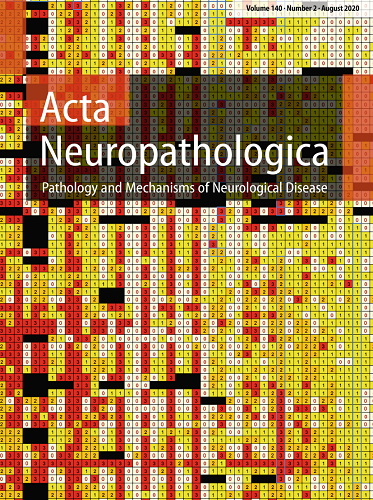Analysis of the splicing landscape of the frontal cortex in FTLD-TDP reveals subtype specific patterns and cryptic splicing
Abstract
Dysregulation of TDP-43 as seen in TDP-43 proteinopathies leads to specific RNA splicing dysfunction. While discovery studies have explored novel TDP-43-driven splicing events in induced pluripotent stem cell (iPSC)-derived neurons and TDP-43 negative neuronal nuclei, transcriptome-wide investigations in frontotemporal lobar degeneration with TDP-43 aggregates (FTLD-TDP) brains remain unexplored. Such studies hold promise for identifying widespread novel and relevant splicing alterations in FTLD-TDP patient brains. We conducted the largest differential splicing analysis (DSA) using bulk short-read RNAseq data from frontal cortex (FCX) tissue of 127 FTLD-TDP (A, B, C, GRN and C9orf72 carriers) and 22 control subjects (Mayo Clinic Brain Bank), using Leafcutter. In addition, long-read bulk cDNA sequencing data were generated from FCX of 9 FTLD-TDP and 7 controls and human TARDBP wildtype and knock-down iPSC-derived neurons. Publicly available RNAseq data (MayoRNAseq, MSBB and ROSMAP studies) from Alzheimer’s disease patients (AD) was also analyzed. Our DSA revealed extensive splicing alterations in FTLD-TDP patients with 1881 differentially spliced events, in 892 unique genes. When evaluating differences between FTLD-TDP subtypes, we found that C9orf72 repeat expansion carriers carried the most splicing alterations after accounting for differences in cell-type proportions. Focusing on cryptic splicing events, we identified STMN2 and ARHGAP32 as genes with the most abundant and differentially expressed cryptic exons between FTLD-TDP patients and controls in the brain, and we uncovered a set of 17 cryptic events consistently observed across studies, highlighting their potential relevance as biomarkers for TDP-43 proteinopathies. We also identified 16 cryptic events shared between FTLD-TDP and AD brains, suggesting potential common splicing dysregulation pathways in neurodegenerative diseases. Overall, this study provides a comprehensive map of splicing alterations in FTLD-TDP brains, revealing subtype-specific differences and identifying promising candidates for biomarker development and potential common pathogenic mechanisms between FTLD-TDP and AD.

 求助内容:
求助内容: 应助结果提醒方式:
应助结果提醒方式:


